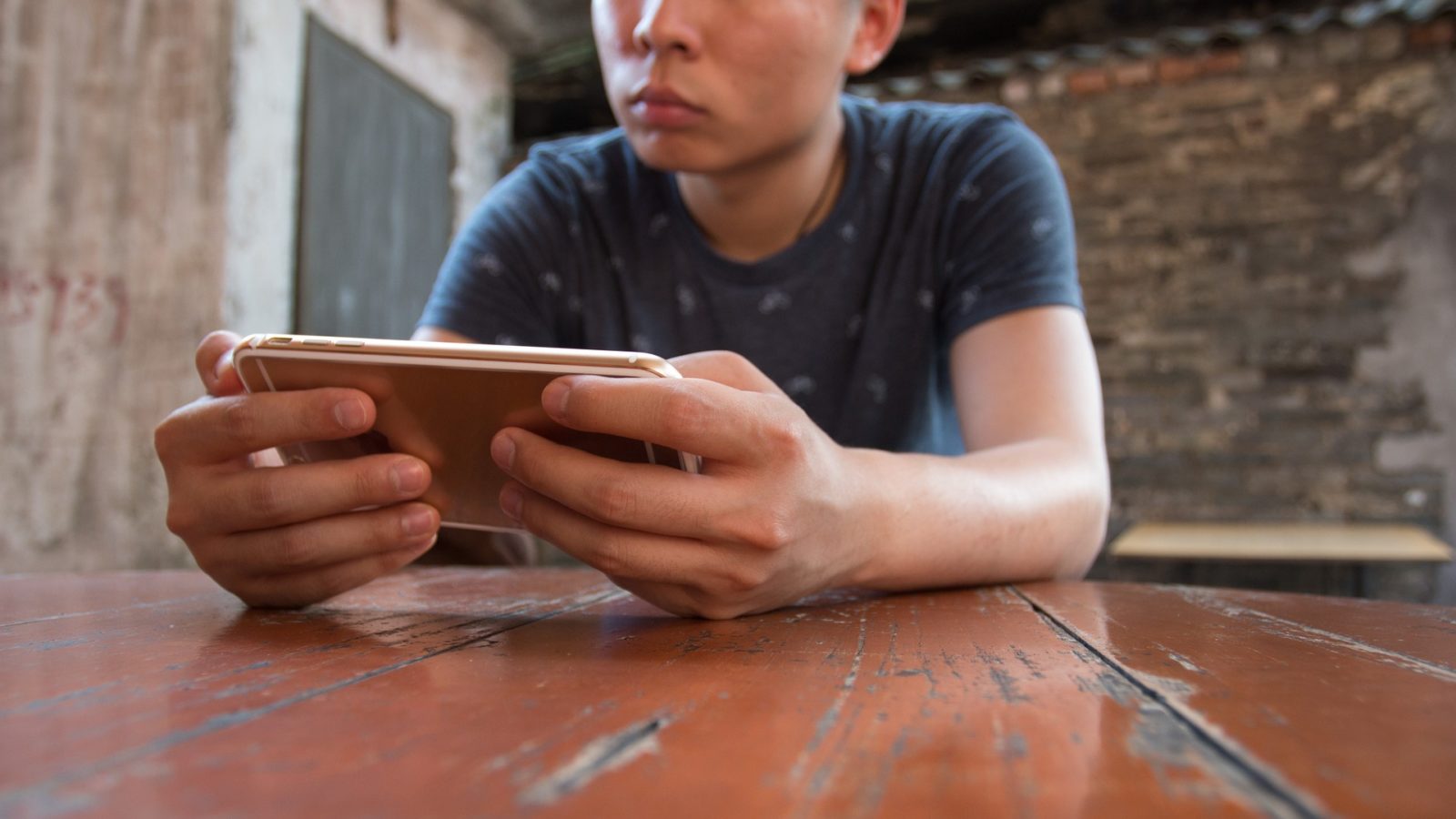When Ajit Gosavi, 25, was a teenager, gaming wasn’t an easily accessible pursuit, he remembers ruefully. Parents fiercely guarded the home computer, only the rich boasted of Playstations, and there were no smartphones handy for a quick match.
“I would be eager to play DotA (Defense of the Ancients) even before the final bell went off in school,” Gosavi recalls, “but I knew that once I reached home, I would first have to study and finish my homework.”
Four hours later, at around 5 pm, the briefest nod from his mother would send Ajit madly dashing to the nearby cyber café (remember those?) where his friends would join him for a game. Gosavi was allowed an hour but he often stretched it to three, four and five. “I wanted to be a gamer,” he shrugs.
Ajit surpassed the desire to become a gamer but the game’s graphics, he says, inspired him to make him what he is today: A graphic designer.
“But none of us was as addicted as the children today,” Gosavi says. For a simple reason: “We didn’t have the means.”
***
The audience at Prime Minister Narendra Modi’s Pariksha Pe Charcha 2.0 (loosely translated to Let’s Discuss Exams) were amused when he asked, “PUBG-wala hai kya? (is he a PUBG gamer?)”, to a mother complaining about her son’s addiction to online games. Social media touted his relatability.
But, really, the PM was merely reflecting his—and the world’s—awareness of a growing malaise, where, by 2020, India’s mobile games market will be worth $1.1 billion and have 628 million users.
Many of these 628 million users will not be casual players and succumb to obsessive and uncontrolled use. In July last year, The World Health Organization (WHO) added “internet gaming disorder” to its manual of psychiatric diagnoses. It defined the disorder as when gaming takes over people’s lives for a year or more to the detriment of other activities and the “continuation or escalation of gaming despite the occurrence of negative consequences.”
The adolescent and teen gamers, however, are oblivious to the negative consequences. They are spellbound by, Dr Avinash Desouza, psychiatrist, says, “the gaming interface and graphics they don’t see in real life”.
Digital gaming, in fact, has become their top avenue for expression. “The whole gaming system, which involves playing with friends and competing, results in building a community which appeals to them. It begins with casual use but the need to be ahead of others and score points propels the addiction,” Dr Desouza says.
There’s no more the barrier of going to a cyber cafe. However, the ease and accessibility mean that gaming doesn’t stay limited to recreation but leaves a trail of problems. Excessive gaming, especially violent games like PlayerUnknown’s Battlegrounds (PUBG) and Fortnite, psychiatrists and psychologists agree, results in harmful physical and mental health consequences.
Dr Desouza’s 14-year-old patient, for instance, is a Fortnite addict who has been bunking school to play at home all day. “It was a coincidence that his mother found out and brought him to me,” the psychiatrist recalls. “Like in other teenagers who are addicted to digital gaming, this boy had general poor conduct, was aggressive, and there was also a certain element of depression in him.”
It is, to say the least, maniacal. F0r those who spend all their waking hours playing, even a minute’s distance from the game leads to irritability, Dr Sapna Bangar, a Specialist Child and Adolescent Psychiatrist and centre head for mental health-focussed organisation MPower, says. “Gaming addiction is like gambling. You are isolating yourself and lying to your parents to play for hours. And the consequences aren’t just mental. One starts to see physical side-effects, too. There’s poor hygiene, headaches, and a general feeling of fatigue.
But it’s the increase in anger and frustration that’s most worrying. Dr Bangar’s 10-year-old patient is a PUBG addict who was expelled from school for being aggressive. “It’s a learned behaviour for children,” she says. Portray someone aggressive who is a hero and that’s what children would imitate. But in this case, it’s come to a point where the boy refuses to go to school altogether. “He wants to become a gamer and finds his everyday education futile,” Dr Bangar says. (Empirical evidence suggests that children who identify as male are addicted to violent games but studies are inconclusive.)
It’s something the boy’s parents can’t wrap their minds around, as can’t Ruchita Shah, Founder and CEO of First Moms Club (an urban mothers’ community) and the mother of a 14-year-old who enjoys digital games. “I look at video games as a problem because that’s the generation I come from,” she says, comparing 6-8 hours of gaming for someone who wants to be a professional gamer to someone who trains in a physical sport. “Even if digital games are improving the child’s hand-eye coordination, it’s physical sports that are eventually good for their overall development.”
Screens or not, doctors also believe there’s a difference between how children who play offline vs online behave. “If I ask a cricketer,” Dr Bangar says, “to not play for a day, they will be willing. It’s not the same for someone addicted to gaming.”
Whether or not children should spend more time outside is an old conversation but it continues to be relevant. It’s also what has the experts concerned. “We have digital toddlers today, who suffer from, what I call, a nature deficiency disorder,” Dr Desouza says. Few urban children today go to the park and collect flowers, bees, or butterflies. Fewer see the stars.
Fewer, also, according to Dr Bangar, spread out a board game to understand how to wait for their turn or how to share. “While children are much more aware of what’s going on in the world thanks to the internet,” Dr Bangar says, “We have to work harder on building their resilience. There is a reduced contact with children their own age which means they lack empathy and find it difficult to, say, share or take no for an answer.”
However, a sentimental outlook towards the time when children played outside is not an option when technology is ubiquitous. Not only aren’t there enough public spaces to play, it’s difficult to keep children off screens when they’ve been exposed to them since a young age. “We have to understand we are immigrants. It’s the children who are digital natives. It’s their world,” Ruchita Shah cautions. “A lot of it might be ridiculous to us but remember that a lot of what we did was ridiculous to our parents.”
Still, there’s little explanation for a two-year-old child who won’t sleep till she plays a game/watches a video on a screen or a teenager who retaliates like his digital avatar. In Dr Bangar’s words: “Think of a child wailing in a restaurant. It’s easy to hand him/her a screen and get him to shush.” Or “think of a 13-year-old returning home to say every other person in her class has a smartphone. The peer pressure is immense and parents buckle.”
To be fair, there’s not a lot of difference between minors or adults addicted to gaming. But if in the case of adults, their work-life may get hampered, “it’s the development of the brain that takes the hit for children.”
According to Shah, this is where parents err. “They hand over screens to kids and then when they see that the usage is going out of control, they try to unsuccessfully put restrictions,” she says. “A set of rules, as well as a clear difference between the real and virtual world, should be established since the very beginning.”
Want to share your story of how you thrive? Write to us at [email protected]


